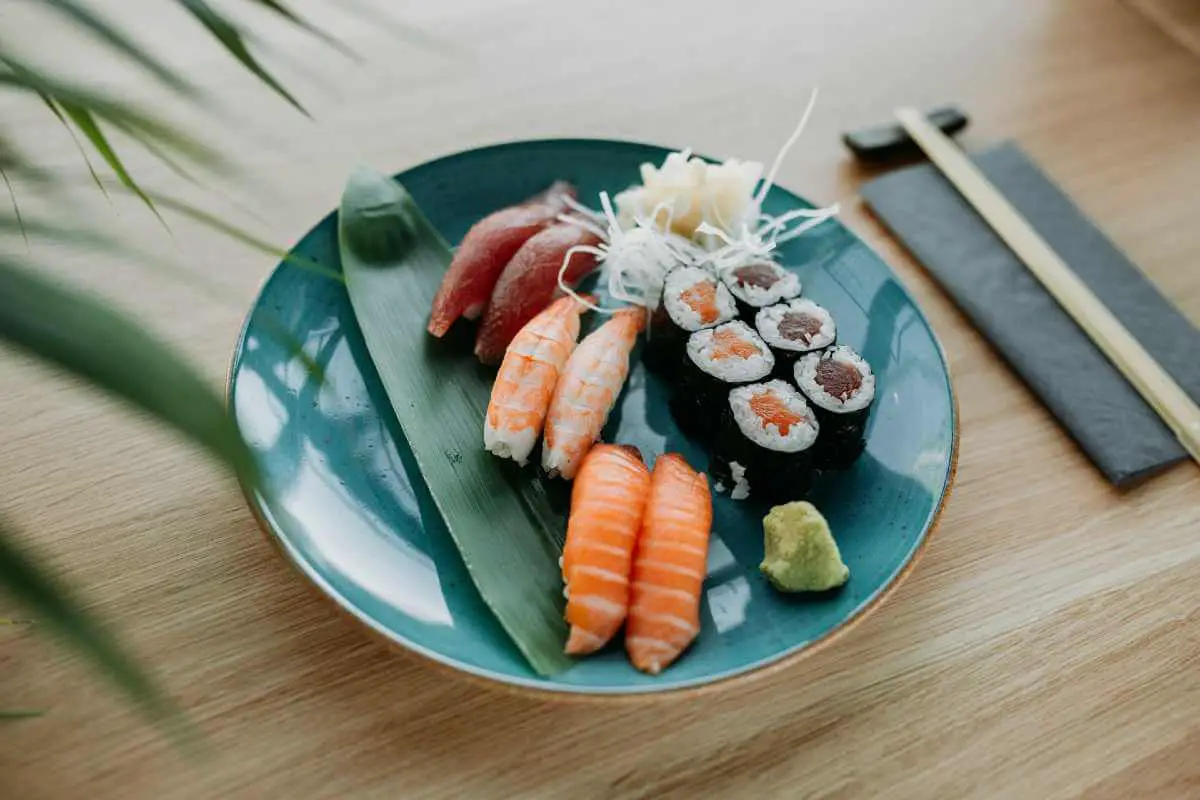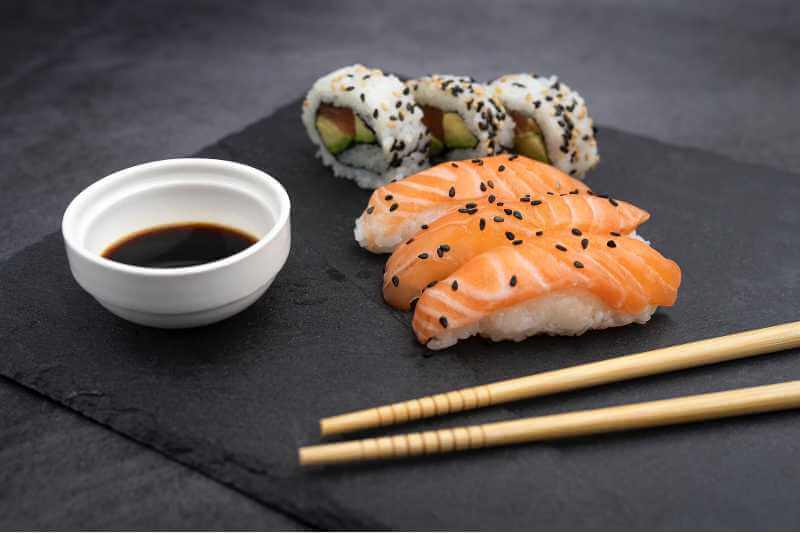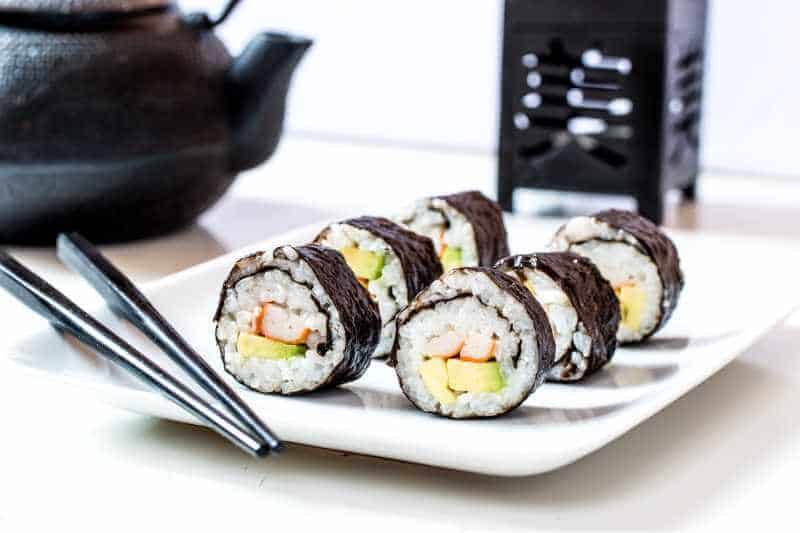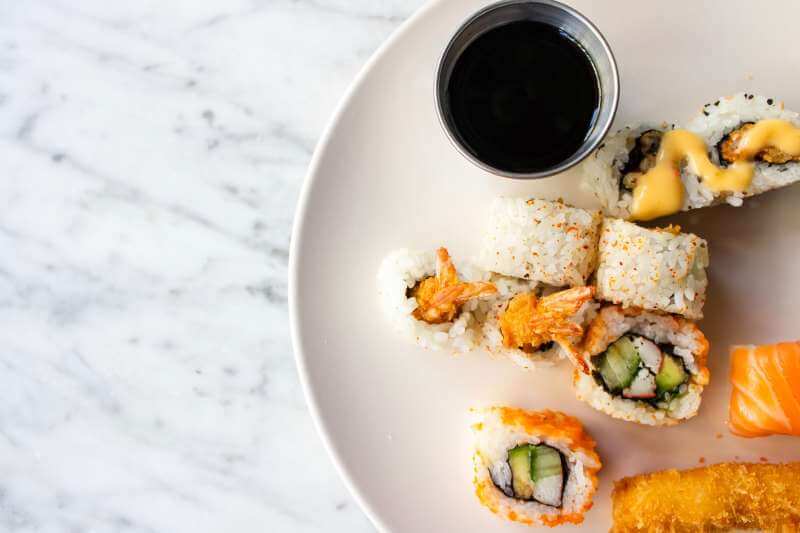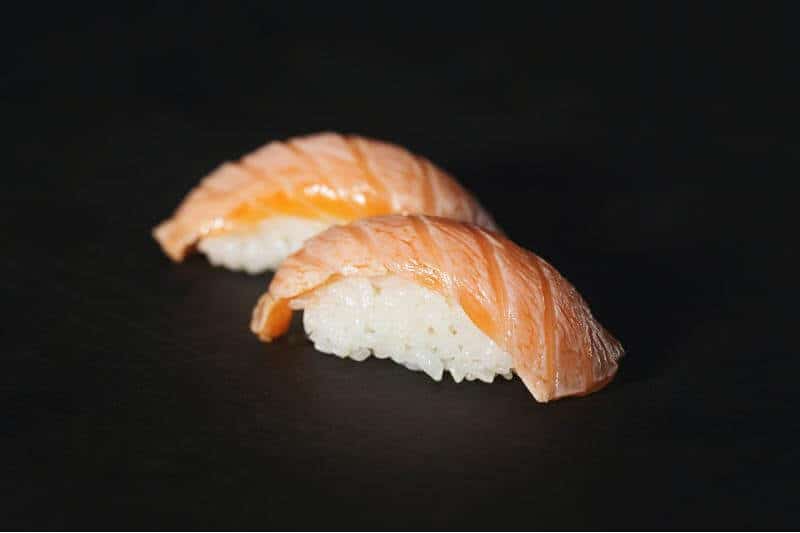Sushi is a delicious dish that can be made with many different types of raw fish. Two of the most popular choices are nigiri and Maki. Nigiri sushi consists of rice, usually topped with pieces of raw seafood such as tuna or salmon (or both), and then pressed into shape using a bamboo mat called an oshibako.
Maki sushi, also known as inside-out rolls, includes seaweed – which is called nori – rolled up around the ingredients like a burrito and then cut into pieces for serving.
These two types of sushi have similar tastes but they differ in appearance and texture because one has rice on the outside while the other has it on the inside.
Understanding these differences will help you order next time at your favorite Japanese sushi restaurant. What are these differences? Are there similarities between the two? We find out…
What Is Nigiri?
Nigiri is a type of sushi that comes from the early Edo period. The name literally means “hand-pressed” because its original form was simply rice balls pressed together with fish or other ingredients wrapped around them.
Chef’s use oshibako to shape the Nigiri. Made of wood, this traditional Japanese form is used for shaping. There is a mat on the top of oshibako, and they press rice onto it to make its shape.
Then, they put sushi ingredients on the rice. Nigiri comprises only two main ingredients – sushi rice with some additional flavoring or topping, cut into bite-sized pieces. It’s extremely simple yet tasty!!
What Is Maki?
Maki sushi, or inside-out rolls, are rolls made with seaweed (nori) on the outside. Nigiri usually has only two main ingredients – rice and fish whereas Maki can comprise many different types of fillings. These include cucumber, carrots, avocado, pickled radish, and even cheese!
Maki is also often cut into six or eight pieces, each one containing about two bites of sushi. If you are not familiar with this type of rolled sushi, it’s worth giving it a try because so many different types are available and are extremely tasty!
Nigiri vs Maki: What’s Different
Nigiri is a piece of sushi with rice and fish pressed together whereas Maki is a type of rolled sushi consisting of seaweed around the ingredients. Nigiri contains raw seafood and pressed sushi rice while Maki can be filled with many different kinds of ingredients, cooked or raw.
Culture…
When people think of sushi, they usually think of Nigiri. It is also more typical in Japanese culture because it’s eaten at home or packed for quick lunches. Maki sushi is often made to order because it’s more difficult to make than Nigiri.
Topping…
Another difference between the two is that nigiri is usually served with soy sauce but Maki is not. Maki contains rice on the outside, so it has already been seasoned! Nigiri on the other hand can be dipped into soy sauce because it does not contain any on the inside.
Nigiri vs Maki: What’s Similar
Both of these types of sushi are made with cooked rice and fish. They both also commonly contain raw fish, whether it’s the main ingredient or an additional topping.
Nigiri and Maki can also be found in most sushi restaurants throughout the world. Whether you’re looking for a more traditional nigiri or some unusual Maki, you can usually find it at your local Japanese restaurant.
Nutrition…
They also have similar nutritional values. A lot of sushi contains protein, healthy fats, vitamins, minerals, and other important nutrients – all things that you need to stay healthy!
Nigiri vs Maki: Health Benefits Of Both
Nigiri is made with seafood along with rice, so it’s high in protein and omega-3 fatty acids. Some types of Nigiri also contain egg or veggies such as cucumber. These are great sources of vitamins and minerals and are important nutrients for your diet.
Protein…
Maki also has healthy ingredients that can include salmon, tuna, carrots, cucumber and more. These ingredients give you plenty of vitamins and minerals, along with protein. Maki is also high in fiber and low in calories, making it a great choice to maintain a healthy diet.
Both types of sushi are packed with nutrients that promote your health. They are great additions to any diet, and they can be made easily at home or eaten out. Both healthy and delicious, isn’t that a win-win?
Types Of Nigiri Sushi
Tuna, Salmon, Yellowtail, Octopus
These are the most common types of sushi that you can find at any sushi restaurant. The tuna and salmon come from different parts of the fish, so they have a slightly different flavor. These types of Nigiri usually contain freshly sliced pieces of their namesake topped with a slice of lemon.
Scallop, Clam
These types of Nigiri are usually served with the scallop or clam on top of a thin slice of lemon, sometimes without any rice beneath it. This type of sushi is drizzled with soy sauce and sometimes served with some ginger. It is also commonly eaten with the fingers instead of chopsticks.
Crab
This type of Nigiri can either be made with real crab or imitation crab sticks, which are mashed together and formed into a ball. This sushi is often served with wasabi and soy sauce for dipping and usually has a slight crunch to it when you bite in.
Types Of Maki Sushi
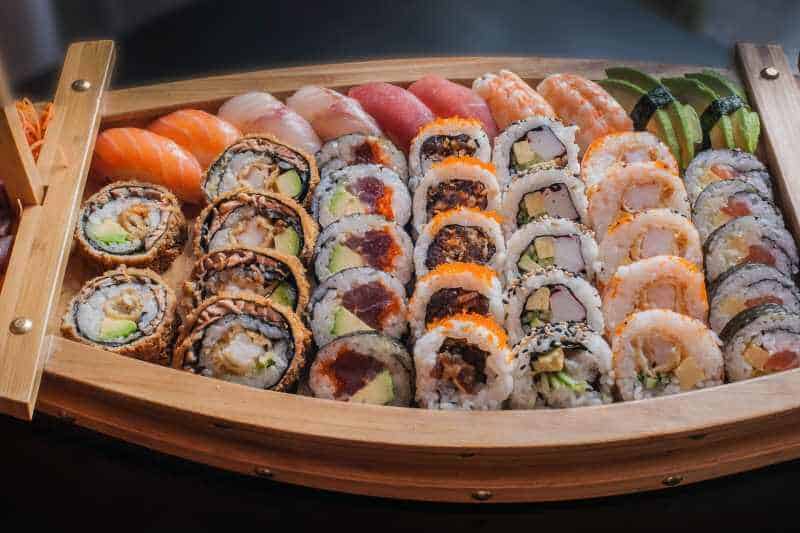
California roll
This type of Maki usually contains crab stick, cucumber, nori (seaweed) and rice. The ingredients are rolled into a cylindrical shape using a bamboo mat and usually cut into six pieces before serving.
Philadelphia roll
This type of sushi roll typically contains cucumber, avocado, nori and sesame seeds along with rice and cream cheese. This soft mixture is wrapped in seaweed just like the California roll but the ends are left unsealed.
Spicy Tuna roll
This type of Maki contains marinated ground or chopped tuna that is mixed with scallions, chili sauce, sesame oil and spices before being rolled into a cylindrical shape using a bamboo mat.
There are many more types of Maki sushi, but these are some of the most popular. Maki is a very versatile dish, so the great thing is that you can make it using almost any ingredients that you want!
Nigiri vs Maki: How Many Calories?
Caloric Values Of Nigiri:
- Tuna: 113 calories per piece for a 3.5 oz or 100 g serving
- Salmon: 113 calories per piece for a 3.5 oz or 100 g serving
Caloric Values Of Maki Sushi:
- California roll: 258 calories per piece for a 5 oz or 142 g serving
- Philadelphia roll: 309 calories per piece for a 6 oz or 170 g serving
- Spicy tuna roll: 283 calories per piece for a 5.5 oz or 155 g serving
As you can see, both types of sushi are very nutrient dense and filling without being high in calories. The simple fact is that eating either Nigiri or Maki can be a healthy part of your diet if you are careful with the amount that you eat.
Nigiri vs Maki: How To Eat It?
- Nigiri should be eaten with chopsticks because it is considered to be a more formal type of sushi.
- Maki rolls are usually eaten with your hands because they are easier to pick up and eat. They are also less likely to fall apart in your hands, which makes them the obvious choice for beginners!
- When eating Nigiri, you can either dip it into soy sauce or eat it plain. Maki can also be eaten with dipping sauce, so you would dip the outside of the roll into soy sauce for example.
Conclusion
Nigiri vs Maki: Which one is better? It really depends on your personal preference. If you want something simple and traditional, then Nigiri sushi would be best. If you want something more filling and flavorful, Maki sushi might be the perfect choice.
Just keep in mind that you don’t have to choose one type of sushi and stick with it for the rest of your life! In fact, variety is the spice of life so why not try both types? You might just find a new favorite!

